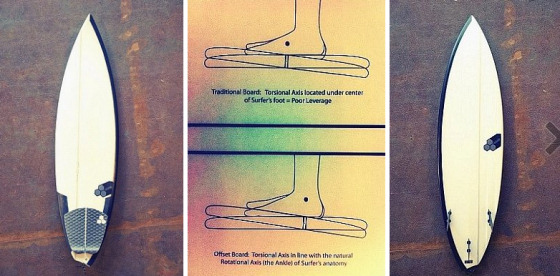Kelly Slater has been testing asymmetrical surfboards shaped by Channel Islands. Some say it works; some say it is another way of marketing surfboards.
In the last few days, Roy Stewart from Olo Surfer strongly criticized the theory behind Channel Islands' new revolutionary product.
"The claim is that moving the stringer will change the axis of rotation of the surfboard," Roy Stewart wrote on his website.
"This is incorrect, as the axis of rotation is determined by the surfboard's area distribution and the position of the rider's feet, not by the stringer position."
The avant-garde wooden surfboard shaper says the above diagram explains the surfboard will rotate around the stringer position.
"It will not. Leverage cannot be increased by moving the stringer position," continued the shaper.
Stewart believes the CI idea does not reflect the true knowledge of surfboard flex and hydrodynamics and calls it a "Myth-Making Marketing Machine."
Have your say. Send your ideas and opinions to editor [at] surfertoday.com. We'll add it here below.
Adam Weller:
Definitely not an expert on physics or hydrodynamics but:
1. Although you might not be able to increase leverage by moving the stringer, it would seem to me that moving the stringer would increase the stiffness of the new (lower volume) side of the board;
2. Further that this new stiffness could translate into increased responsiveness and power on that new lower volume side (which I'm assuming is intended to be the rider's heel side);
Am I being too gullible or optimistic?
